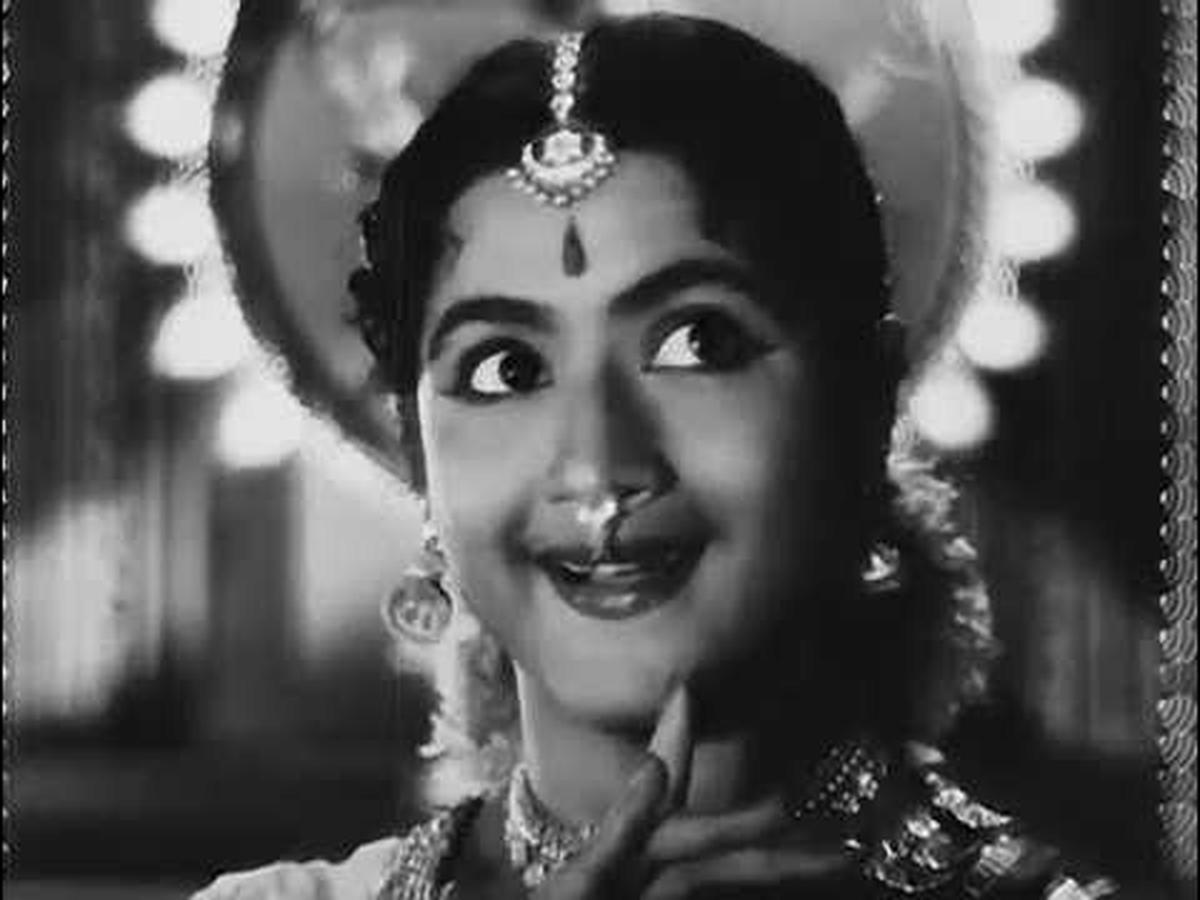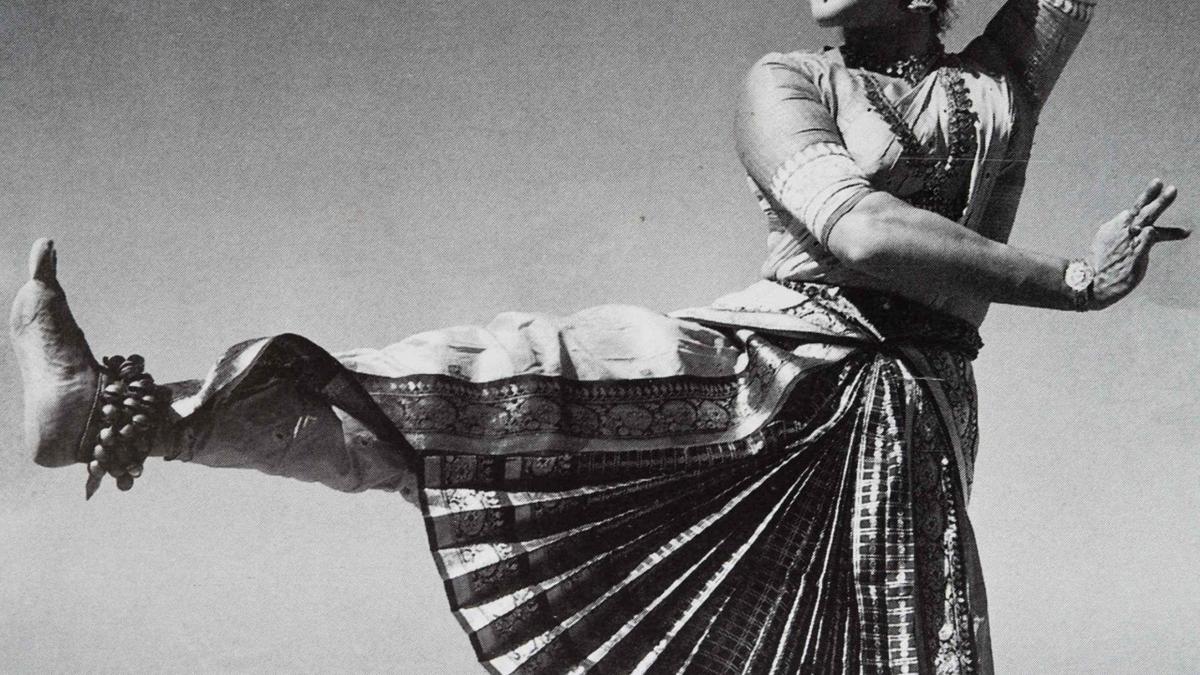Bharatanatyam as a dance form in the post-revival years was popularised greatly by someone so famous that many parents named their daughters after her. She inspired girls from middle-class families to take up the dance form at a time when women from non-hereditary caste locations were discouraged to do so.
Described as the ‘Queen of Dance’ by none other than Pandit Jawaharlal Nehru, Kumari Kamala (now Kamala Lakshminarayanan), a child prodigy, blazed a Bharatanatyam trail across the country and beyond with her electrifying performances in the Vazhuvoor style. The legendary dancer, who moved to the U.S. in 1980, turned 90 this June.
Initially trained in Kathak by Shambu Maharaj and Lachhu Maharaj, Kamala, aged just four, started performing small items in the recitals of senior artistes. After witnessing her debut performance at the Asthika Samajam in Bombay, film producer and director Chandulal Shah offered her a contract of Rs 500 a month to dance in all his films.
Later, Kamala and her family had to move back to the South during the World War. Thus began her tryst with Bharatanatyam. Kamala’s first teacher was Kattumannarkoil Muthukumaraswamy Pillai. He later introduced Kamala to Vazhuvoor Ramaiah Pillai, paving the way for a brilliant collaboration. Being one of Vazhuvoor’s earliest disciples, Kamala helped him take his choreography to the masses through her foray into films as an actor.
She was a popular dancer both on screen and stage
| Photo Credit:
Special Arrangement
In the 1940s and 1950s, Kamala attained great heights for executing never-before-seen pieces such as the snake dance with her signature back bend, which later went on to become an arangetram staple. During the freedom movement, Kamala’s special film numbers such as ‘Aaduvome pallu paaduvome’ and ‘Vetri ettu dhikku’ were powerful tools of resistance against the imperial government.
A thillana dance sequence in the film Chori Chori (1956) was one of Kamala’s best on-screen performances back then and continues to fascinate lovers of classical music and dance even today. M.L.Vasanthakumari, who lent her voice even appears on the screen as a lead singer in the orchestra that accompanies the dancer.
While film roles poured in, Kamala simultaneously performed on stage. Dancer and scholar Lakshmi Viswanathan who once interviewed Kamala for The Hindu wrote that Kamala’s early exposure to a certain discipline moulded her into a great artiste. “The crisp and quick movements meant to fit into a particularly short cine-musical piece, as well as the sense of drama in elegant poses to be captured by the camera, shaped Kamala’s formative years. It is no surprise that when she reached the top as a stage artiste, she faced her audience with an enviable elan,” she wrote.
Kamala, who danced without a break every year from 1941 to 1979 at the Music Academy December festival, as well as other sabhas, had new pieces continuously composed to suit her.
Kamala holds many firsts to her credit. In April 1963, Tyagaraja’s musical opera Nauka Charitram was staged for the first time as a ballet. Kamala, who was the producer and choreographer, also played the chief role in the geya nataka, assisted by her sisters and members of her troupe.
MADRAS MISCELLANY: KUMARI KAMALA, DANCER.
Though she was a stickler for tradition, she brought in refreshing ideas into the art. Conventionally, hereditary dancers move back after a jathi or a korvai and stand. This was referred to as ‘vishranti’ and was used by dancers to take a brief break. In Vazhuvoorar’s style, dancers assumed the poses of temple sculptures during this break. This was a marked departure from tradition.
Kamala believed that tradition was not something constant and that it evolves with time. True to her conviction, she was the first to choreograph pieces such as Swati Tirunal’s ‘Bhavayami raghuramam’, Oothukkadu Venkatakavi’s ‘Ananda nartana ganapatim’ and even the popular Nattakuranji varnam ‘Chalamela’. Reviewers sometimes questioned the aptness of certain songs in her dance performances, but they became normalised with time.
Kamala possessed a rare skill as a Bharatanatyam guru. She has to her credit several dance dramas such as ‘Sakuntalam’, ‘Prahlada Bhakti Vijayam’, and ‘Sri Krishnamashraye’.
In October 1979, members of a study group of the Music Department of the Colgate University, New York, came to Madras and learnt their first steps in Bharatanatyam from Kamala on Vijayadasami day. In just three months, the American students presented a Kuravanji dance drama with Kamala’s other sishyas. From an education point of view, Kamala’s setting of an ambitious target accelerated the learning process. From an artistic point of view, it was a valiant effort by Kamala as she dared to cast an American student Elizabeth Hartman as the heroine Mohanavalli. Even in the orchestra, Colgate University students played the veena, and mridangam, did nattuvangam and even sang. Colgate was among the first American colleges to introduce the study of Carnatic music and the credit for this must go to Professor William Skelton, who worked with Kamala in this production.
Skelton felt that the effort was meaningful enough to “create Indophiles and not just tourists whose pleasant experiences evaporate as quickly as they are formed”.

Kamala’s thillana in Chori Chori is considered one of her best on-screen performances
| Photo Credit:
Special Arrangement
Kamala’s social conscience as a performing artiste can be gauged from the fact that the proceeds from the show went entirely to a hospital in her hometown of Mayiladathurai to build a new children’s ward.
After a long and bright career in India, Kamala moved to America as she felt she was not getting enough support from the government here. Known to always speak her mind, she said in her ‘Nritya Choodamani’ award ceremony in 1989 that a dancer’s earning time was short and pleaded that tax not be levied on the income of an artiste after 15 years of service. She also sought national honour and recognition for dancers, as was extended to sportspersons.
Kamala’s divorce from her first husband, the famed cartoonist R.K. Laxman, in 1960 was much talked about and was one of the earliest divorces in the Hindu community in India as there was no legal framework that could formalise a divorce before the enactment of the Hindu Marriage Act of 1955. Later on, Kamala went on to marry T.V. Lakshminarayanan, in defiance of social norms at that time.
As an octogenarian and senior dance exponent, Kamala possesses the wisdom and intellectual maturity to admire younger dancers for their presentations.
In the U.S., Kamala started Sri Bharatha Kamalalaya in Long Island, where she trained numerous students. She also regularly drove down to other cities for classes, keeping herself active. As a living legend, her legacy continues through her students.
Published – November 28, 2024 05:00 pm IST
#Kamala #set #Bharatanatyam #stage #future






